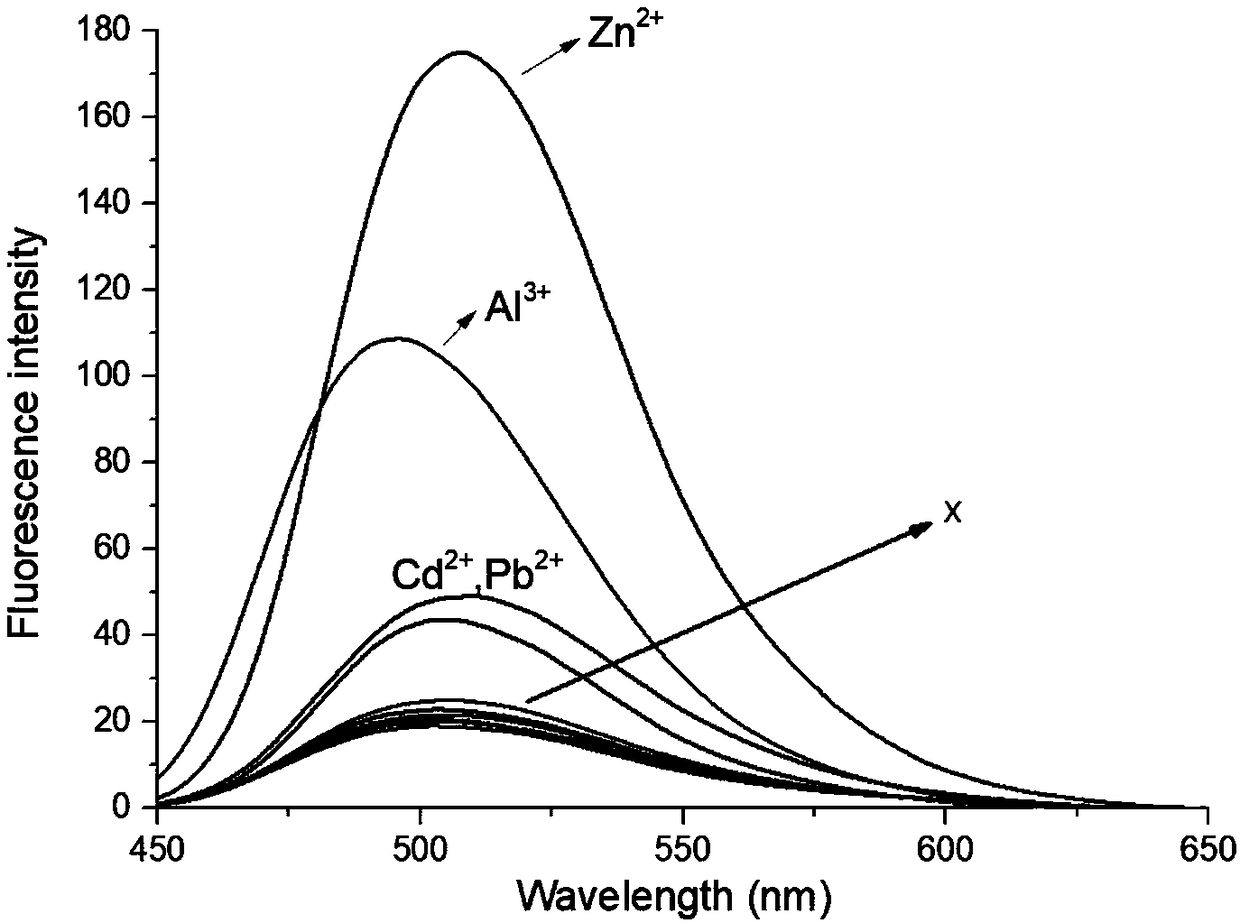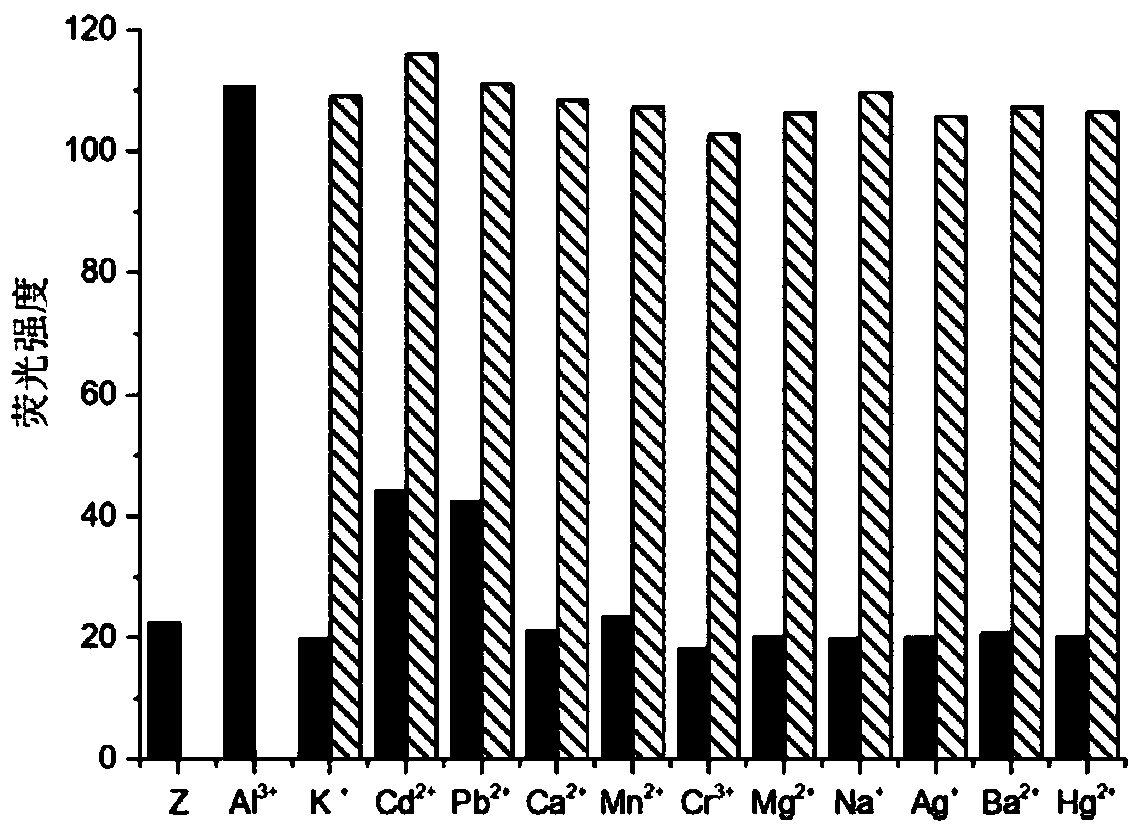Aluminum ion and zinc ion recognition dual-functional fluorescence probe and preparation and application methods
A fluorescent probe, zinc ion technology, applied in chemical instruments and methods, fluorescence/phosphorescence, luminescent materials, etc., can solve the problems of low selectivity and sensitivity, cumbersome probe synthesis steps, etc. The effect of strong anti-interference ability and broad application prospects
- Summary
- Abstract
- Description
- Claims
- Application Information
AI Technical Summary
Problems solved by technology
Method used
Image
Examples
specific Embodiment approach 1
[0037] Specific embodiment 1: The bifunctional fluorescent probe for recognizing aluminum ions and zinc ions in this embodiment is a covalent combination of 2-(2-hydroxyphenyl)benzothiazole and salicylhydrazide, and the bifunctional fluorescent probe The structural formula is as follows:
[0038]
specific Embodiment approach 2
[0039] Specific embodiment two: the method for preparing a bifunctional fluorescent probe for recognizing aluminum ions and zinc ions in this embodiment includes the following steps:
[0040] 1. Compound 1 is obtained by reacting 5-methyl salicylaldehyde with o-aminothiophenol:
[0041] Dissolve 5-methylsalicylaldehyde and o-aminothiophenol in N,N-dimethylformamide (DMF), then add sodium pyrosulfite, heat to reflux, the heating temperature is 110-120°C, reaction 3 ~4h, use a TCL plate to detect the reaction. After the reaction is complete, add deionized water to the solution after cooling to room temperature, and a pale yellow precipitate precipitates out. Filter the precipitate, wash it with deionized water for 5 to 6 times, and obtain compound 1 after drying;
[0042] Wherein the mol ratio of 5-methyl salicylaldehyde and o-aminothiophenol is 1:1;
[0043] Two, the compound 1 obtained in step 1 is reacted with urotropine to obtain compound 2:
[0044]Dissolve compound 1 and...
specific Embodiment approach 3
[0048] Embodiment 3: This embodiment is different from Embodiment 2 in that in step 3, after compound 2 and salicylhydrazide are added to ethanol, glacial acetic acid is added until the pH of the reaction system is 4-6. Others are the same as in the second embodiment.
PUM
 Login to View More
Login to View More Abstract
Description
Claims
Application Information
 Login to View More
Login to View More - Generate Ideas
- Intellectual Property
- Life Sciences
- Materials
- Tech Scout
- Unparalleled Data Quality
- Higher Quality Content
- 60% Fewer Hallucinations
Browse by: Latest US Patents, China's latest patents, Technical Efficacy Thesaurus, Application Domain, Technology Topic, Popular Technical Reports.
© 2025 PatSnap. All rights reserved.Legal|Privacy policy|Modern Slavery Act Transparency Statement|Sitemap|About US| Contact US: help@patsnap.com



